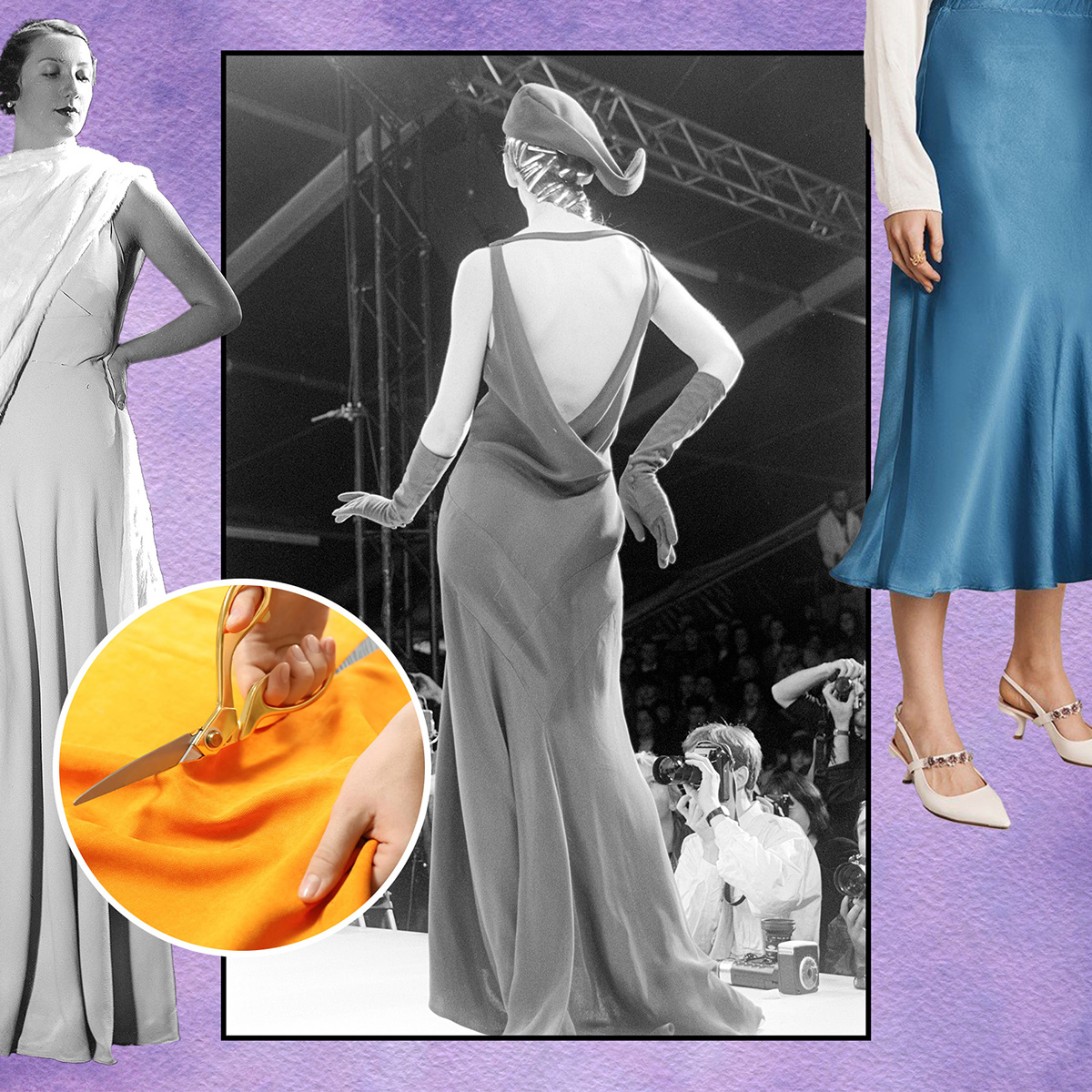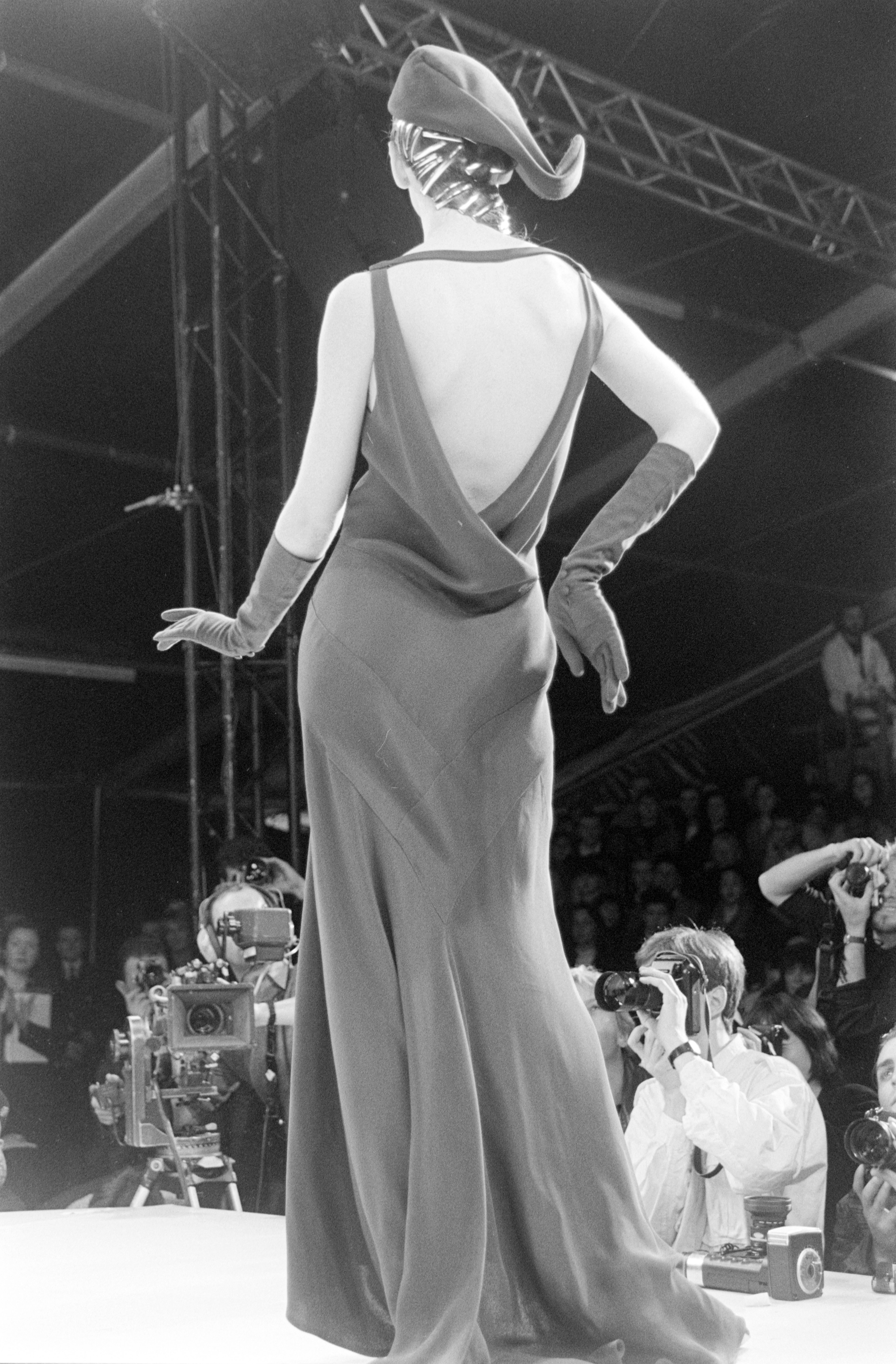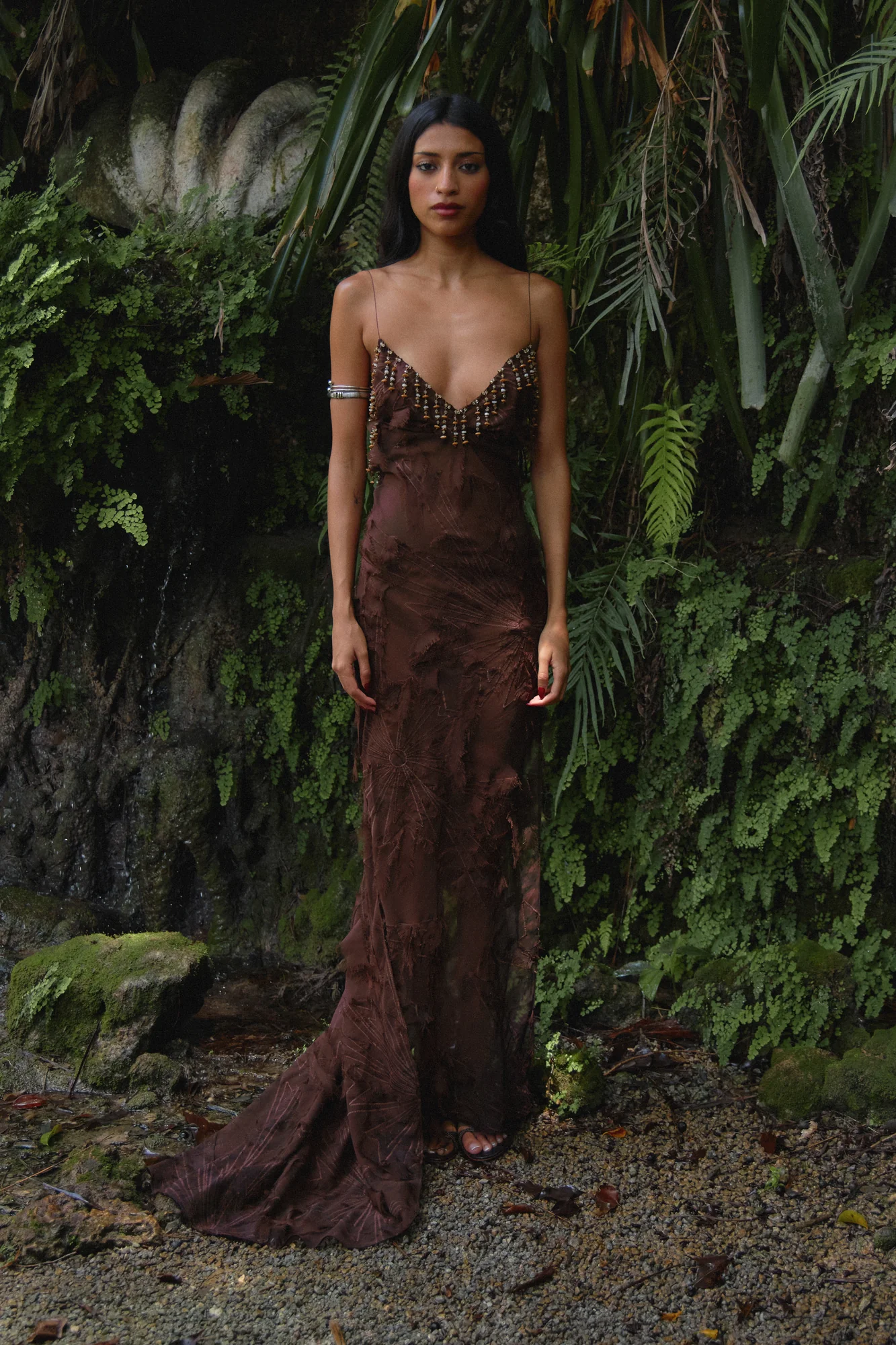
Lakyn Carlton didn't intend to go viral, but it only took one tweet. On June 7, the personal stylist posted two photos of satin slip skirts she stumbled across when shopping for a client. A turquoise bias-cut midi by the British brand Ghost London, which skimmed the model's body and fluttered outward at the hem, and a straight-cut gray style from Vancouver-based brand Brunette the Label that bunched at the waist, clung to the hips and hit at the mid-calf.
Given their design differences, she decided to turn the midis into a teaching moment about bias cuts. Carlton's caption read, "The difference between a skirt cut on the bias vs. not. It's hard to unsee once you know what you're looking for." This method, pioneered by the French fashion designer Madeleine Vionnet in the 1920s, involves cutting fabric (primarily silk) at a 45-degree angle from its woven grain instead of the traditional method of cutting parallel to the grain.
The tweet highlighted the technique's visual nuances: materials cut on the bias skim the body, drape like liquid, and flare out at the hem. To discerning eyes and those with tailoring knowledge, the distinction is clear that the former skirt was cut on the bias, and the latter was not.
The difference between a skirt cut on the bias vs. not. It's hard to unsee once you know what you're looking for. pic.twitter.com/j5O1hoQSMKJune 7, 2024
"I found it so interesting—mostly because the skirts were pretty much the same price (Ghost London's is £69 or $87 USD; Brunette the Label's is $109)—but so obviously different in [craftsmanship]," Carlton says over email. "I really didn't expect [the tweet] to blow up." But it did: her post currently boasts over four million views.
Fashion Twitter, a niche but highly impassioned corner of the Internet, instantly had opinions about the two skirts shared by Carlton. They fell into two opposing camps; some commenters were team bias cut in praise of traditional tailoring methods, while others found it to be “dated,” “conservative,” and “matronly.” The conversation has transcended far beyond bias cuts to become a critique of fashion’s debate about trends writ large.
The topic of fast fashion then entered the chat: In a quote tweet that received over 48,000 likes, Cora Harrington, author and former editor-in-chief of the blog The Lingerie Addict, chimed in. “It’s interesting seeing people say they prefer the [straight] cut on the right because the left [bias cut] looks too old [i.e., mature]. She says 'new' has become synonymous with youthful, on-trend dressing. "It's an interesting touchpoint culturally, especially with the rise of fast fashion," she notes.
Simultaneously, the same conversation began to ramp up on fashion TikTok. In response to Carlton’s tweet, recent fashion business graduate Maya Torseke, in a video that's received over a million views and counting, said, “It's interesting that there are specific [production techniques] that are 100 percent about lowering manufacturing costs that have trickled down into the trend cycle [as an aesthetic]. Essentially, people see something as more valuable because it's what they've been exposed to—padding the bottom lines behind closed doors.
For some, affordability and convenience are greater priorities than craftsmanship. Recent reporting shows contemporary clothing quality has declined due to cost-cutting measures across fast fashion production. Consumers have become accustomed to polyester slip dresses that they'll receive the next day—as opposed to a made-to-order gown that would take weeks to create but last a lifetime.
@souljamaya ♬ original sound - Souljamaya
The extinction of designers prioritizing craftsmanship is a topical subject across the fashion sets' social media and Substacks, longing for a time when a thoughtful, slower approach to design was the norm.
The infamous John Galliano is a name that often appears on the subject. Fashion historian and auctioneer Kerry Taylor explains that his “clinging, sensuous bias-cut dresses” were a signature of his eponymous '80s fashion house, cementing him as a symbol of high-level craft. His artistry, like that showcased in Galliano’s Maison Margiela’s Artisanal Spring 2024 show, resonates profoundly with fashion folks. Alongside the theatrics were his technical precision and attention to detail—down to the bias-cut silk organzas. It was a production that felt like it was from fashion’s bygone era when there was an appreciation for the technique of bias cutting and other tailoring skills—not a competition of which label could churn out the viral hemline the quickest with the lowest price point.

Nostalgia and longing for a slower fashion cycle contributed to Carlton’s tweet going capital "V" Viral. A sentimental shopper wrote, “My mum lived in bias-cut skirts in the ‘90s, and now it's nearly impossible to find (a good) one."
But Marcelo Gaia, the designer and founder of the made-to-order fashion brand Mirror Palais, heeds caution when judging bias cuts as strictly good or bad. "I disagree with the overall sentiment that one cut of the garment is better than another universally speaking,” he says over email. “There can be poor executions of both bias-and straight-cut garments and beautiful masterpieces on both ends.” As Carlton originally noted, plenty of non-atelier brands still use the technique and sell at reasonable prices—like ATM Anthony Thomas Melillo, Reformation, Cinq à Sept, and Ghost London (the very skirt that began the heated debate), so it's not exactly in the line of extinction.
Gaia also points out a misconception that bias-cut pieces are the superior option. "From a sustainability point of view, bias-cut garments can require substantial amounts of waste and can use twice the amount of yardage than cutting on the straight grain." But, again, the designer stresses it's not a black-and-white situation tied to a clear right and wrong. "My motto is to create and consume only things that bring true joy. Garments loved and cared for are less likely to end up in landfills." Even if that's a piece—gasp!—that's not cut on the bias.

Ultimately, the best thing you can do as a consumer is inform yourself about what you buy and wear. “Education should always come with neutrality and well-researched information so that, in the end, you can make your own decisions about what you consider to be better and more suitable to your taste and lifestyle,” says Gaia.
This brings us back to Carlton’s tweet, which is intended to be a brief but informative deep dive into fabrics cut on the bias. Despite the conversation spiraling into much more complicated territory, the personal stylist views her tweet and the discourse it inspired as positive. She says people like her followers, Fashion Twitter, and -Tok (i.e., the whole Internet) are learning about a vintage technique. One that dives deeper into the impacts of sustainability and the supply chain. “Learning how to talk about clothes is so important, especially in such a saturated fashion climate,” Carlton says. “There’s so much noise to cut through on your way to your personal style." No matter what you see on social media, it actually isn't biased cut or bust.







